An Ultra-Compact MEMS Pirani Sensor for In-Situ Pressure Distribution Monitoring
Abstract
1. Introduction
2. Experimental of the MEMS Pirani Sensor
2.1. MEMS Pirani Sensor Conception
2.2. Sensor Design
2.3. MEMS Fabrication Processes
- After the initial wafer cleaning and passivation-layer generation, a 300-nm heat-insulating layer of Si3N4 was generated on the top surface of the Si wafer by using a vertical furnace equipment (VF-3000, Koyo Co., Ltd. Tenri, Nara, Japan);
- The lift-off photoresist used for the Pt layer was uniformly coated on the surface and well patterned; a sputtering equipment (SME-200E, Ulvac Co., Ltd. Chigasaki, Kanagawa, Japan) was used to deposit the Pt and gold (Au) metal films on the wafer. The layers of Ta2O5/Pt with a thickness of 20 nm/200 nm were generated on the top surface of the photoresist, and the resistor and electrode pads were fabricated by a lift-off process;
- After Au layer lift-off photoresist coating and patterning, a 500-nm-thickness Au layer was generated on the Pt electrodes for wire and package bonding;
- The Si3N4 layer was patterned by dry etching, and Si was released by wet etching from the backside. To pattern the Si3N4 layer and remove the photoresist layer and other residuals after all the processes, dry etching was performed (E-628, Panasonic Co., Ltd. Moriguchi, Osaka, Japan). Finally, O2 plasma was used to remove the amorphous fluoropolymer material and other residuals.
2.4. Evaluation Methods
3. Measurement Results and Discussion
3.1. SEM Observation
3.2. Vacuum Measurement for Different Size Sensor Resistors
3.3. Resistance and Temperature Change of Sensor Resistor under Varying Applied Voltage and Pressure
4. Conclusions
Author Contributions
Funding
Institutional Review Board Statement
Informed Consent Statement
Data Availability Statement
Conflicts of Interest
References
- O’Hanlon, J.F.; Parks, H.G. Impact of vacuum equipment contamination on semiconductor yield. J. Vac. Sci. Technol. A 1992, 10, 1863–1868. [Google Scholar] [CrossRef]
- Hasegawa, H.; Ohno, H. Unified disorder induced gap state model for insulator–semiconductor and metal–semiconductor interfaces. J. Vac. Sci. Technol. B 1998, 4, 1130–1138. [Google Scholar] [CrossRef]
- Lessard, P.A. Dry vacuum pumps for semiconductor processes: Guidelines for primary pump selection. J. Vac. Sci. Technol. A 2000, 18, 1777–1781. [Google Scholar] [CrossRef]
- Pirani, M.S. Selbstzeigendes vakuum-messinstrument. Dtsch. Phys. Ges. Verh. 1906, 8, 686–694. [Google Scholar]
- Shie, J.S.; Chou, B.C.S.; Chen, Y.M. High performance Pirani vacuum gauge. J. Vac. Sci. Technol. A 1995, 13, 2972–2979. [Google Scholar] [CrossRef]
- Grau, M.; Völklein, F.; Meier, A.; Kunz, C.; Kaufmann, I.; Woias, P. Optimized MEMS Pirani sensor with increased pressure measurement sensitivity in the fine and rough vacuum regimes. J. Vac. Sci. Technol. A 2015, 33, 021601. [Google Scholar] [CrossRef]
- Ellett, A.; Zabel, R.M. The Pirani gauge for the measurement of small changes of pressure. Physiol. Rev. 1931, 37, 1102–1111. [Google Scholar] [CrossRef]
- English, J.; Fletcher, B.; Steckelmacher, W. A wide range constant-resistance Pirani gauge with ambient temperature compensation. J. Sci. Instrum. 1965, 42, 77–80. [Google Scholar] [CrossRef]
- Durakiewicz, T.; Halas, S. A novel electronic circuit for a Pirani gauge. Vacuum 1995, 46, 101–103. [Google Scholar] [CrossRef]
- Weng, P.K.; Shie, J.S. Micro-Pirani vacuum gauge. Rev. Sci. Instrum. 1994, 65, 492–499. [Google Scholar] [CrossRef]
- Wang, X.; Liu, C.; Zhang, Z.; Liu, S.; Luo, X. A micro-machined Pirani gauge for vacuum measurement of ultra-small sized vacuum packaging. Sens. Actuator A 2010, 161, 108–113. [Google Scholar] [CrossRef]
- Ghouila-Houri, C.; Talbi, A.; Viard, R.; Moutaouekkil, M.; Elmazria, O.; Gallas, Q.; Garnier, E.; Merlen, A.; Pernod, P. High temperature gradient nanogap-Pirani micro-sensor with maximum sensitivity around atmospheric pressure. Appl. Phys. Lett. 2017, 111, 113502. [Google Scholar] [CrossRef]
- Mo, J.; Middelburg, L.M.; Morana, B.; van Zeijl, H.W.; Vollebregt, S.; Zhang, G. Surface-micromachined silicon carbide Pirani gauges for harsh environments. IEEE Sens. J 2020, 21, 1350–1358. [Google Scholar] [CrossRef]
- Marconot, O.; Lecler, S.; Newby, P.J.; Frechette, L.G. Dimensionless Analysis of Micro Pirani Gauges for Broad Pressure Sensing Range. IEEE Sens. J. 2020, 20, 9937–9946. [Google Scholar] [CrossRef]
- Xiao, B.; Dong, T.; Halvorsen, E.; Yang, Z.; Zhang, Y.; Hoivik, N.; Gu, D.; Tran, N.M.; Jakobsen, H. Integrated micro Pirani gauge based hermetical package monitoring for uncooled VOx bolometer FPAs. Microsyst. Technol. 2010, 17, 115–125. [Google Scholar] [CrossRef]
- Grzebyk, T.; Gorecka-Drzazga, A.; Dziuban, J.A. Integration of a MEMS-type vacuum pump with a MEMS-type Pirani pressure gauge. J. Vac. Sci. Technol. B 2015, 33, 03C103. [Google Scholar] [CrossRef]
- Zhang, J.; Jiang, W.; Wang, X.; Zhou, J.; Yang, H. Design and fabrication of high-performance wafer-level vacuum packaging based on glass–silicon–glass bonding techniques. J Micromech. Microeng. 2012, 22, 125022. [Google Scholar] [CrossRef]
- Völklein, F.; Grau, M.; Meier, A.; Hemer, G.; Breuer, L.; Woias, P. Optimized MEMS Pirani sensor with increased pressure measurement sensitivity in the fine and high vacuum regime. J. Vac. Sci. Technol. A 2013, 31, 061604. [Google Scholar] [CrossRef]
- Brun, T.; Merciera, D.; Koumela, A.; Marcoux, C.; Duraffourg, L. Silicon nanowire based Pirani sensor for vacuum measurements. Appl. Phys. Lett. 2012, 10, 183506. [Google Scholar] [CrossRef]


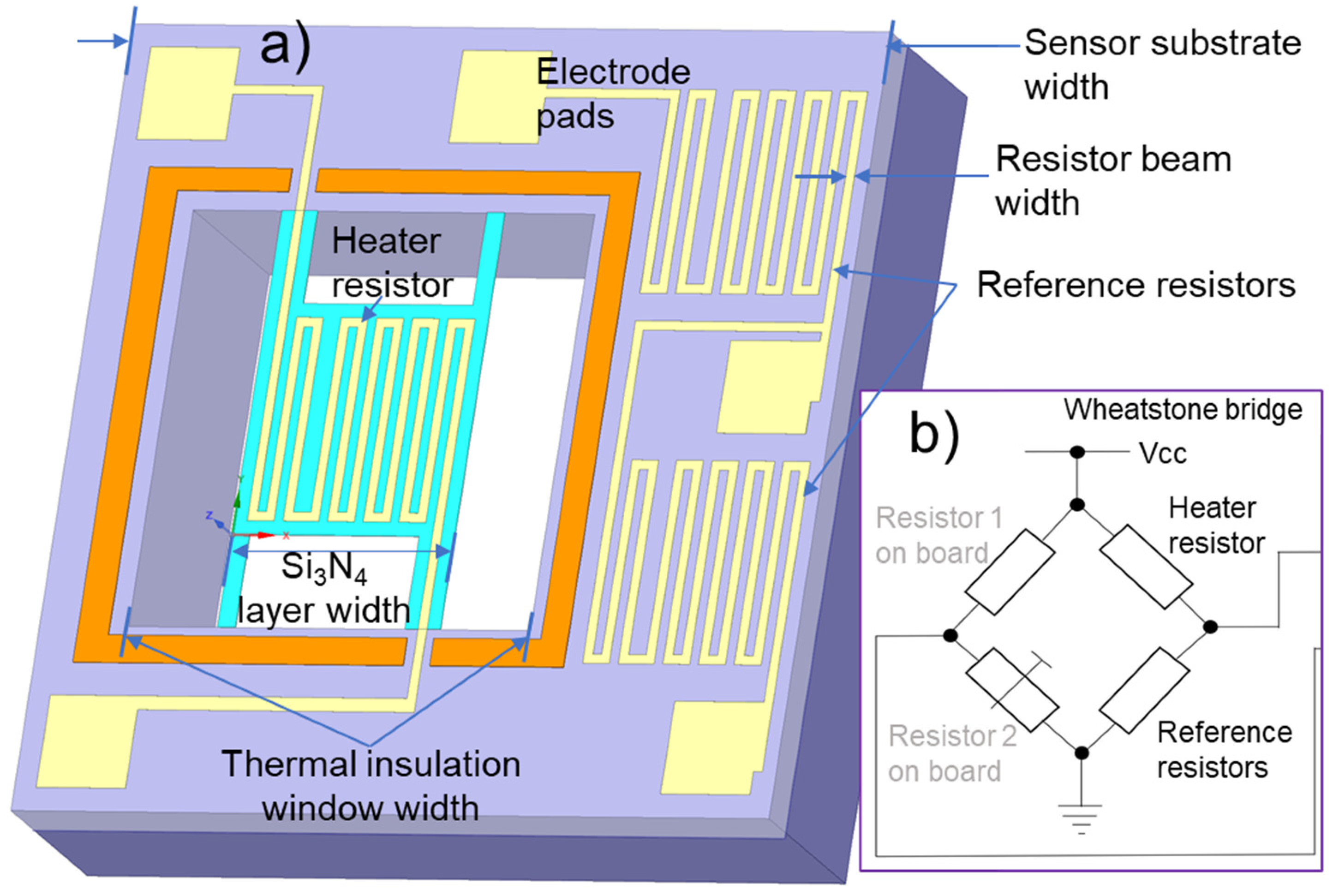
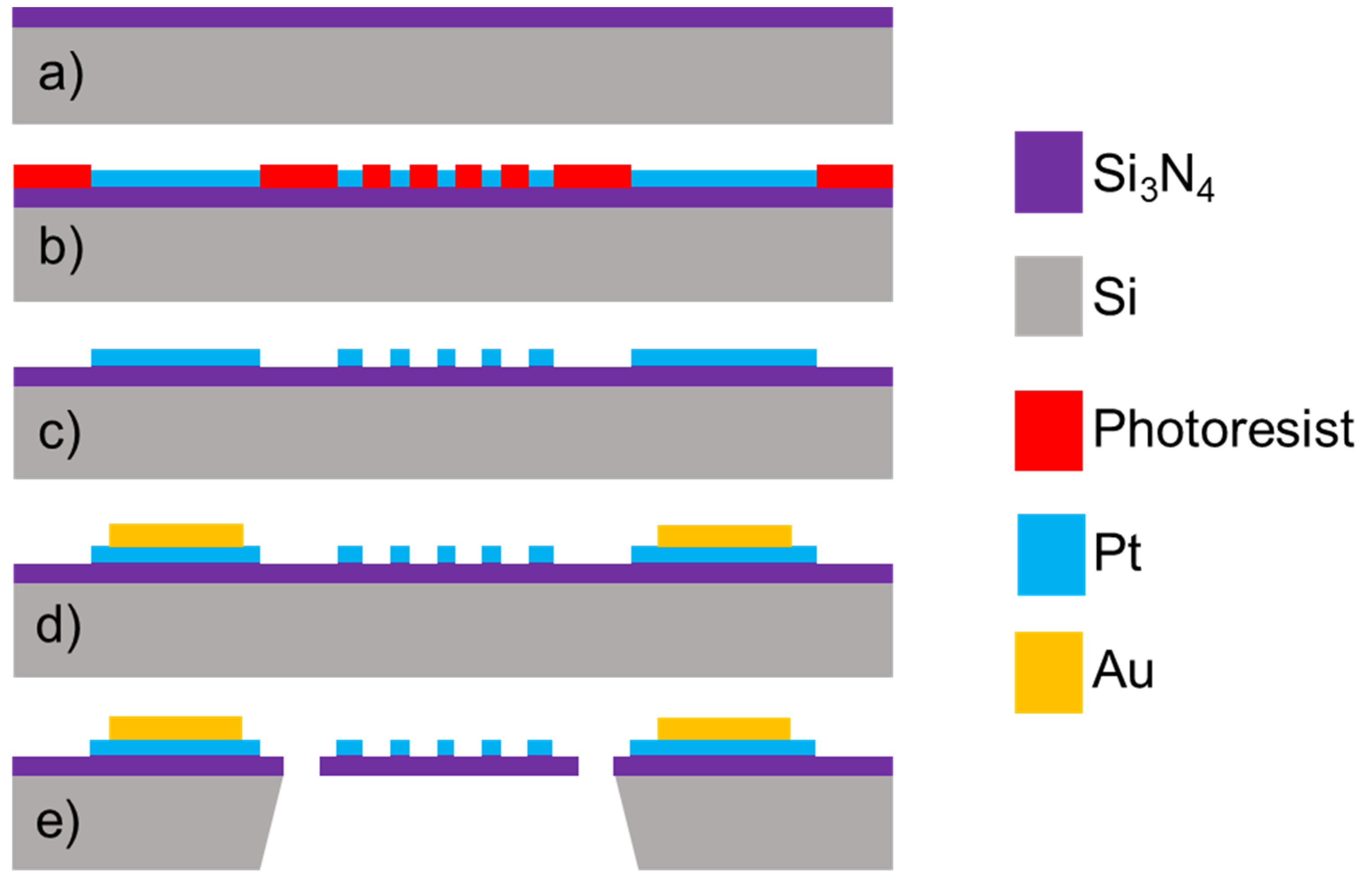
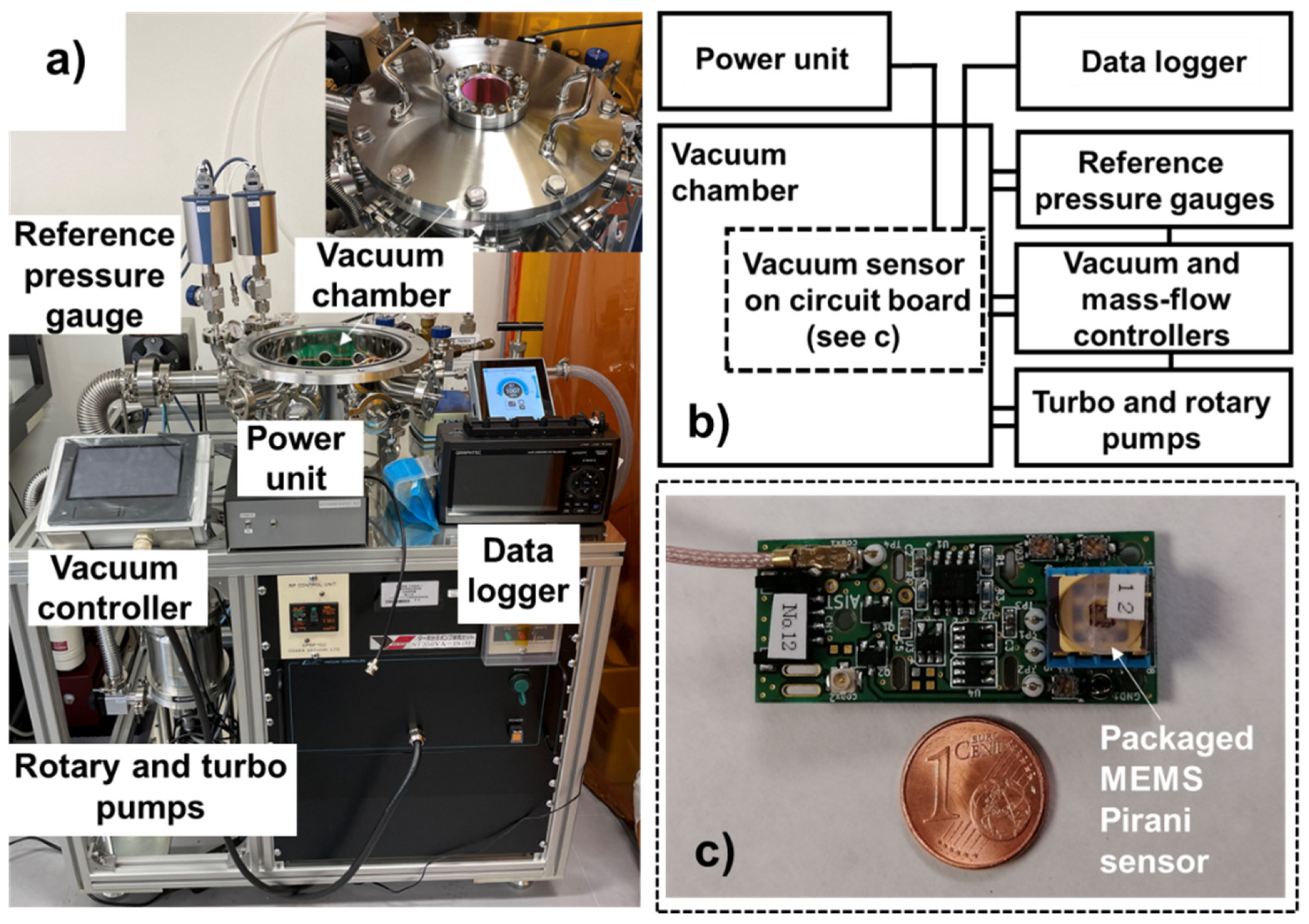
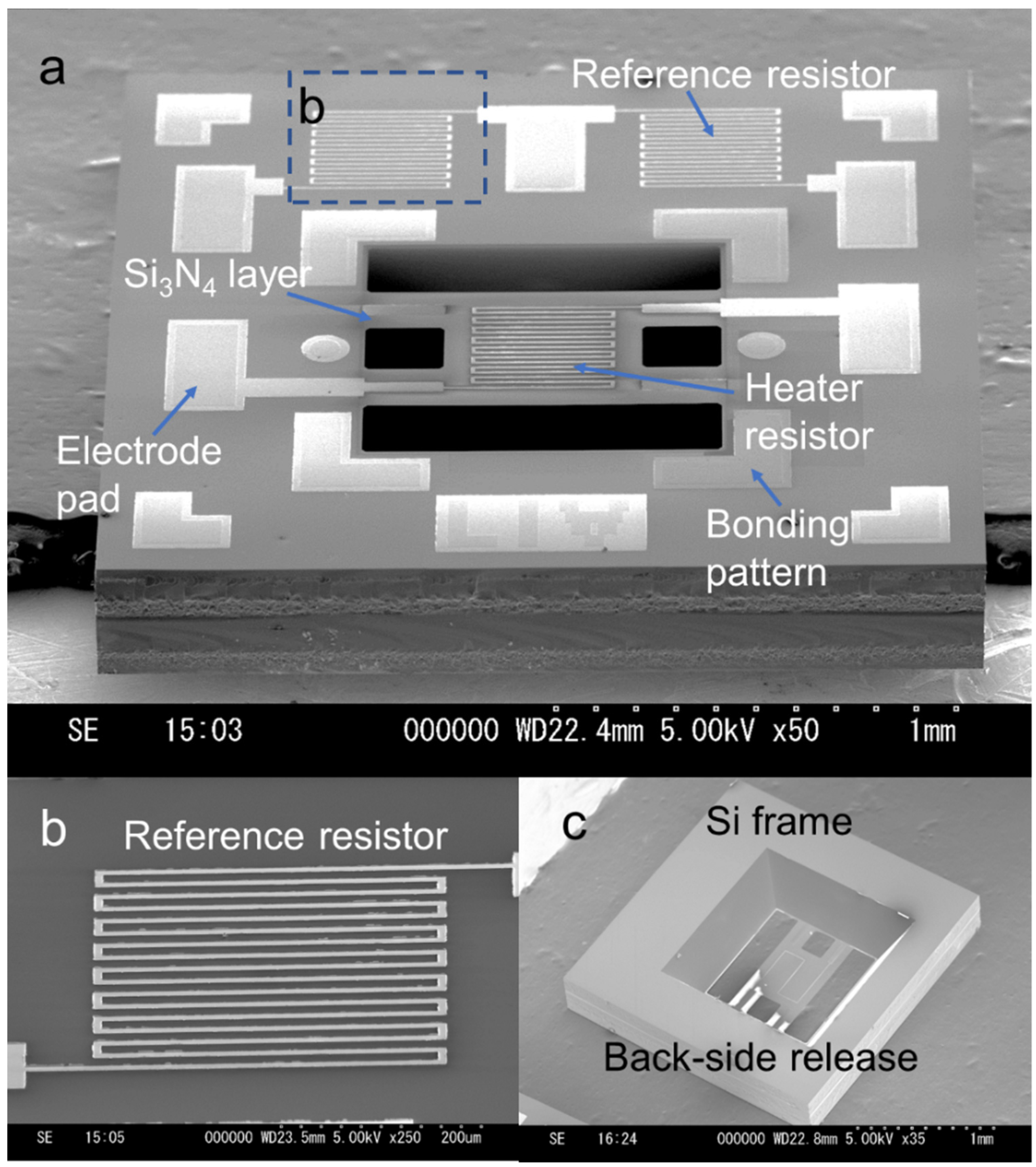
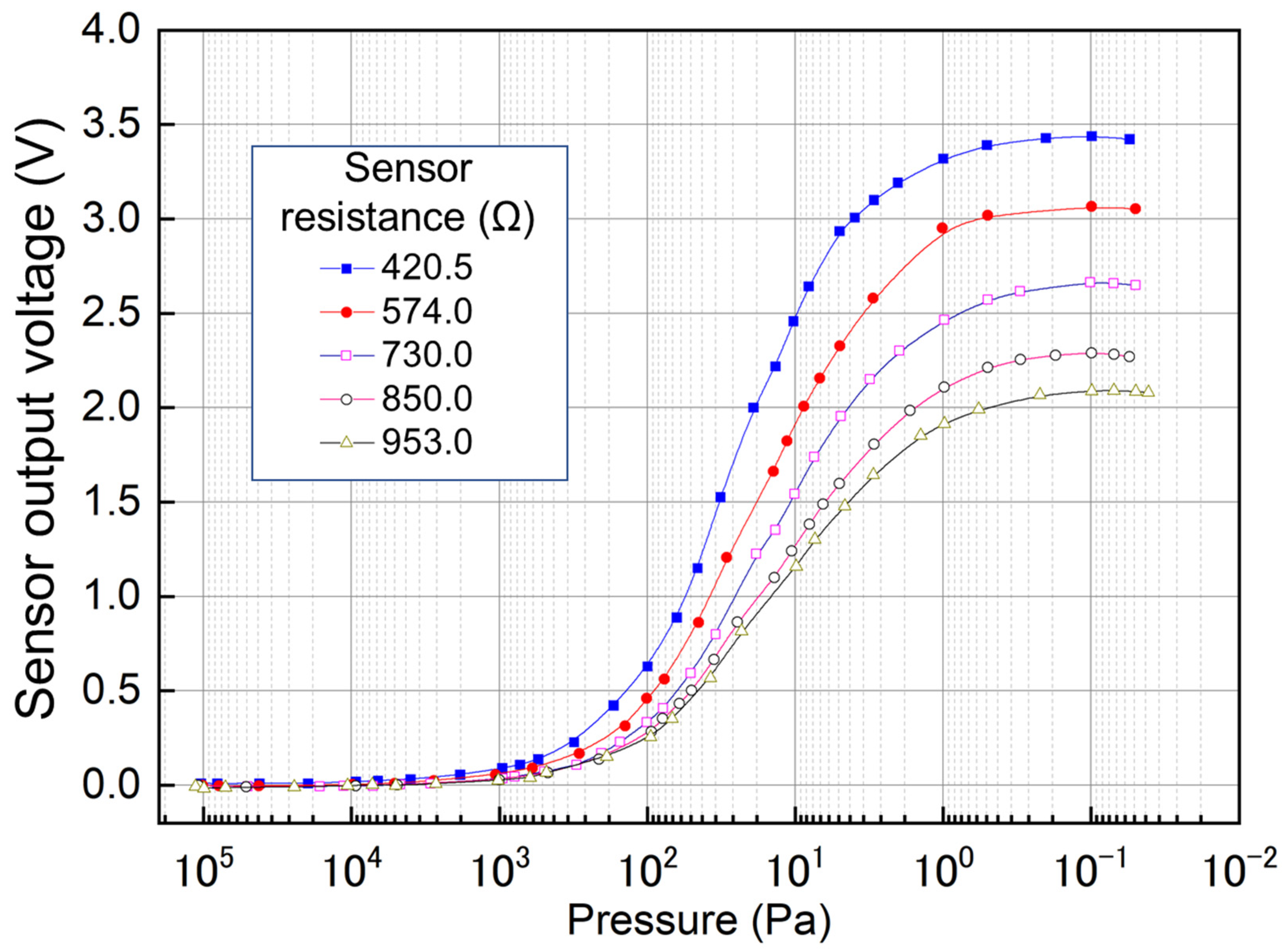
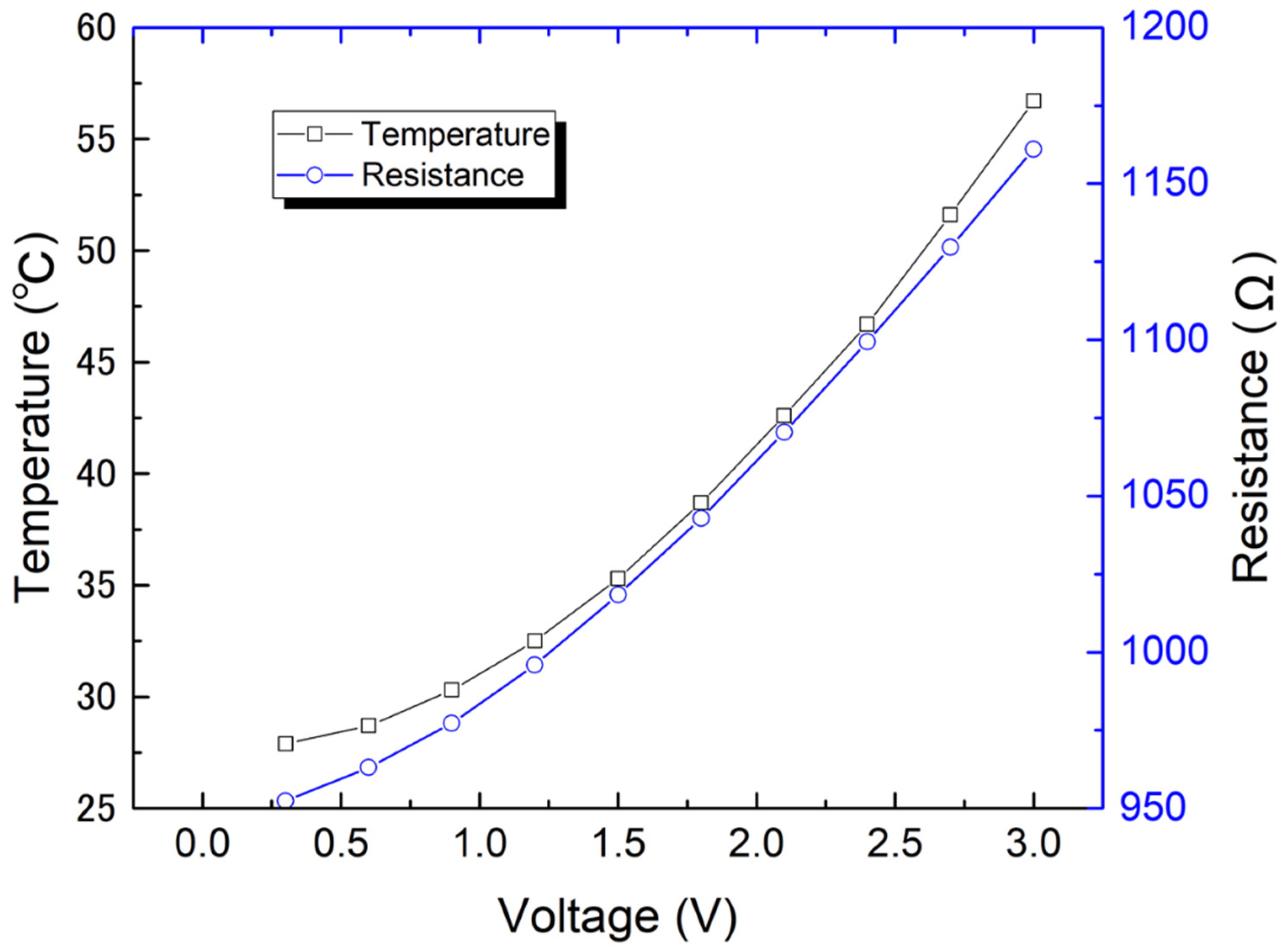
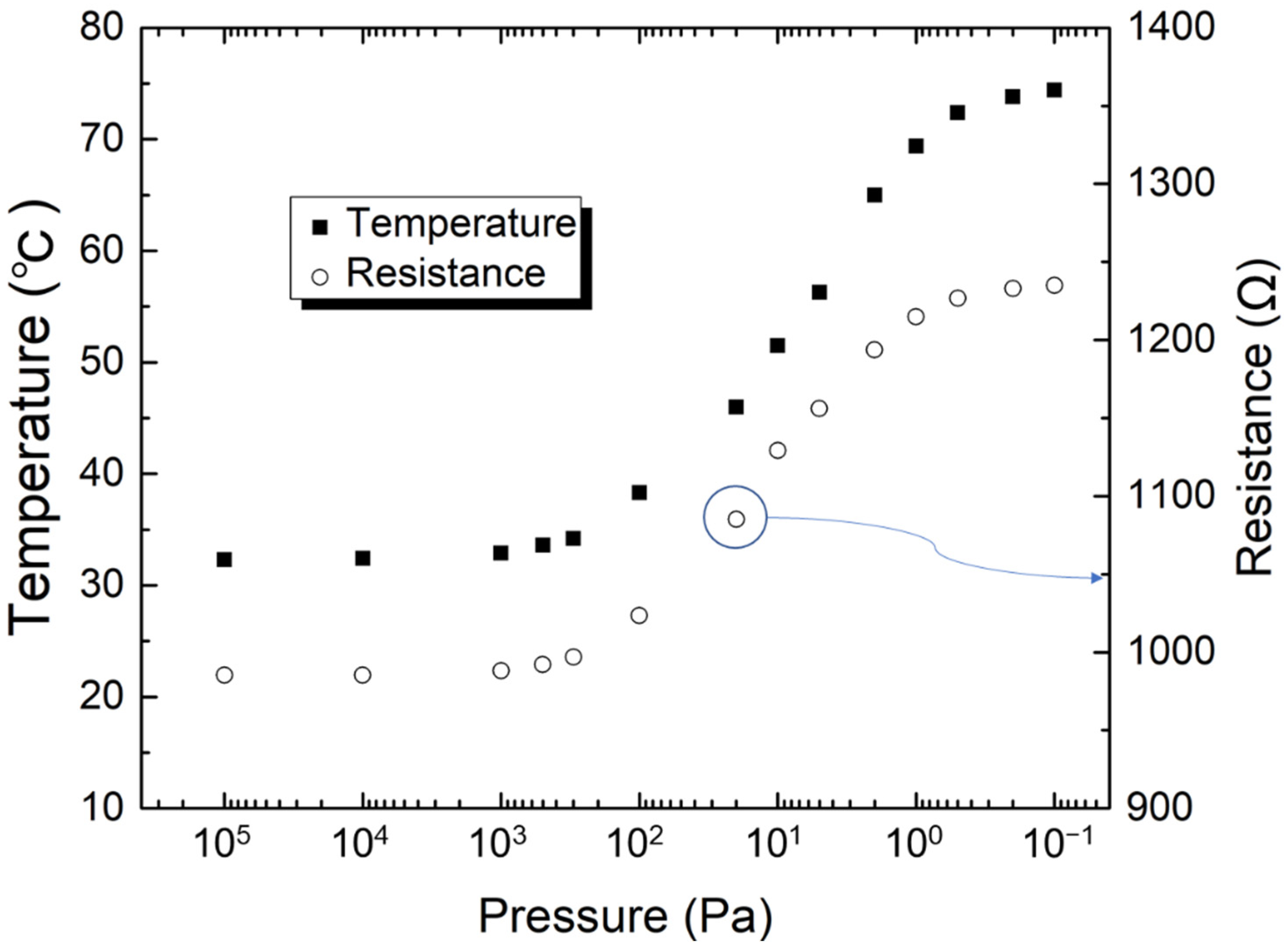
| Heater Resistance Value | Average Responsivity of the Sensor System with 10-Times Amplification (mV/Pa) | ||||
|---|---|---|---|---|---|
| 0.1–1 Pa | 1–7 Pa | 7–100 Pa | 100–1000 Pa | 1000–10,000 Pa | |
| 420.5 Ω | 131.1 | 95.5 | 22.0 | 0.630 | 0.0086 |
| 574.0 Ω | 123.5 | 137.5 | 18.0 | 0.420 | 0.0059 |
| 730.0 Ω | 226.7 | 113.1 | 15.0 | 0.349 | 0.0045 |
| 850.0 Ω | 206.6 | 113.3 | 13.8 | 0.281 | 0.0035 |
| 953.0 Ω | 197.1 | 96.0 | 11.9 | 0.248 | 0.0030 |
Publisher’s Note: MDPI stays neutral with regard to jurisdictional claims in published maps and institutional affiliations. |
© 2022 by the authors. Licensee MDPI, Basel, Switzerland. This article is an open access article distributed under the terms and conditions of the Creative Commons Attribution (CC BY) license (https://creativecommons.org/licenses/by/4.0/).
Share and Cite
Zhang, L.; Lu, J.; Takagi, H.; Matsumoto, S.; Higurashi, E. An Ultra-Compact MEMS Pirani Sensor for In-Situ Pressure Distribution Monitoring. Micromachines 2022, 13, 1686. https://doi.org/10.3390/mi13101686
Zhang L, Lu J, Takagi H, Matsumoto S, Higurashi E. An Ultra-Compact MEMS Pirani Sensor for In-Situ Pressure Distribution Monitoring. Micromachines. 2022; 13(10):1686. https://doi.org/10.3390/mi13101686
Chicago/Turabian StyleZhang, Lan, Jian Lu, Hideki Takagi, Sohei Matsumoto, and Eiji Higurashi. 2022. "An Ultra-Compact MEMS Pirani Sensor for In-Situ Pressure Distribution Monitoring" Micromachines 13, no. 10: 1686. https://doi.org/10.3390/mi13101686
APA StyleZhang, L., Lu, J., Takagi, H., Matsumoto, S., & Higurashi, E. (2022). An Ultra-Compact MEMS Pirani Sensor for In-Situ Pressure Distribution Monitoring. Micromachines, 13(10), 1686. https://doi.org/10.3390/mi13101686






